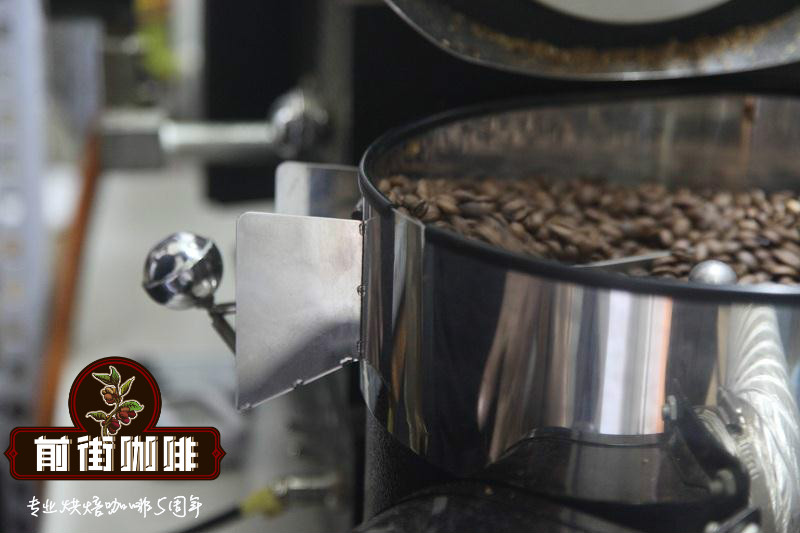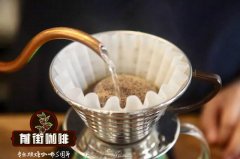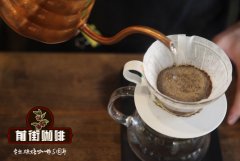What is the most suitable roasting degree for Hawaiian kona coffee? How do you drink Hawaiian Kona coffee?

Professional coffee knowledge exchange more coffee bean information please follow the coffee workshop (Wechat official account cafe_style)
Kona coffee is made in Hawaii. A rare species that can only be planted on volcanic slopes. Taste strong, mellow, and slightly with a wine aroma, moderate sour taste, very special flavor. As the output is decreasing, the price is catching up with Blue Mountain Coffee.
Kona coffee beans, which are grown in the Kona region of Hawaii, are a rare species that can only be grown on volcanic slopes. In addition to its beautiful scenery, Hawaii, a beautiful tropical Pacific island, also produces the famous kona coffee. Kona Coffee is famous because its main producing areas are located in the south and north of the main island and the slopes of Mauna Loa volcano. This variety is one of the most expensive coffee in the world, and only coffee produced in Kona can be called "Kona Coffee".
In addition, the southwest coast of Hawaii Island, 20 miles long and 2 miles wide, 150m-750m above sea level, covers the slopes of Hualalai (Lalai) and Mauna Loa (Mauna Loa) volcanoes. Strictly certified coffee beans can only be sold under the trademark Kona. Due to the declining production of coffee beans, the price is close to that of Blue Mountain Coffee. The strip of Kona coast produces the best coffee in the world, and the output is among the highest in the world. Kona can still produce 2 million pounds of coffee beans a year on less than 2600 acres of coffee land.
Real Kona coffee is indeed a treasure in the world and is not easy to find. According to the evaluation specifications of the Hawaiian Department of Agriculture, coffee beans are divided into four grades: Extra Fancy, Fancy, Prime and Gr.No.1, (100%KONA). Each bag must be accompanied by a complete file identified by the Council of Agriculture and a grade mark printed in a sack. Due to the low production and high cost, with the increasing demand for boutique coffee, the price of Kona coffee on the market is catching up with the Blue Mountain of Jamaica, and the best Kona beans are becoming more and more difficult to buy.
Kona Coffee, which is popular in the world, is born from the special climate of Hawaii. The elevation of Kona area is about 600m, but because the climate belongs to marine climate, its climatic conditions are similar to those of 1200m in Central America. The mountains are rainy and much cooler than peacefully. Although Hawaii is often affected by tornadoes, the climatic conditions are very suitable for the coffee industry. In addition, Hawaii has plenty of rainfall and sunshine, and there is no worry of frost.
The climate is very suitable, the sun in the morning gently passes through the air full of water vapor, in the afternoon, the mountains will become more humid and foggy, and the white clouds surging in the air are natural umbrellas for coffee trees, and the evening will become sunny and cool. Suitable natural conditions make the average yield of Kona coffee very high, up to 2240 kg per hectare, coupled with fertile land and fine management of farmers, making coffee suitable for growing climate. Make Kona coffee a boutique in the market.
Qianjie Coffee Kona Coffee Baking suggestion
Kona Coffee is the same as Blue Mountain Coffee, and both are low-density, low-density beans, the bean temperature should not be too high, in the sweet taste, the color changes to light yellow, high moisture content, need to stew enough time. Coffee beans are refreshing and clean and have a strong and heavy touch. Kona coffee should not be roasted too deep, medium and shallow roasting is recommended (City--Full City-).
Qianjie coffee is recommended to record the data before roasting, the water content, density, origin, treatment method, ambient temperature and humidity in the baking room, etc., and plan your baking curve. Recording the chemical and physical changes during the baking process will help you better understand the final baking results and help improve the baking curve.
Roaster: Yangjia 800N, input 550g raw beans
Bake the curve:
Put the furnace temperature to 200 degrees Celsius, adjust the firepower to 150 degrees after opening the throttle for 1 minute, keep the throttle unchanged, bake to 5 degrees 35 ", the temperature is 150 degrees, the bean surface turns yellow, the smell of grass completely disappears, the dehydration is completed, the firepower is adjusted to 140 degrees, and the throttle is changed to 4.
In the 9th '30th minute, ugly wrinkles and black markings appear on the bean surface, and the smell of toast obviously changes to the smell of coffee, which can be defined as a prelude to an explosion. At this time, listen carefully to the sound of the explosion point, start the explosion at 9: 30 ", lower the firepower to 70 degrees, the throttle should be fully open (adjust the firepower to be very careful, not so small as to be free of bursting sound), turn off the heat at 182 degrees, and put the pot at 193.4 degrees.
The medium-roasted Kona coffee mainly gets a balanced and warm nectar, sweetness and elegance and fullness. Brewing coffee gives off a sweet mulberry aroma that makes people feel sweet and happy. Yu Yun, a kind of soft malt, slips into the throat and exhales and then rushes on the throat, which cools down like a cup of mulberry tea.
END
Important Notice :
前街咖啡 FrontStreet Coffee has moved to new addredd:
FrontStreet Coffee Address: 315,Donghua East Road,GuangZhou
Tel:020 38364473
- Prev

COE winning Manor Niagara Falls Manor introduces what is the flavor of coffee beans treated with red honey?
Professional coffee knowledge exchange more coffee bean information please pay attention to the coffee workshop (Wechat official account cafe_style) Nicaraguan coffee, in the raw bean varieties and post-processing are different, general coffee raw beans in the treatment can be divided into washing, sun, honey treatment. In terms of varieties, the more familiar is the large grain elephant bean (Maragogype). In recent years, it is even more popular with different products.
- Next

How should I drink coffee from sidamo guji region? What are the characteristics of sidamo guji production area?
Professional coffee knowledge exchange More coffee bean information Please pay attention to coffee workshop (Weixin Official Accounts cafe_style) Ethiopia is the country where coffee was first discovered. There are still many wild coffee in the virgin forest for farmers to harvest. Ethiopia is a poor country with constant drought and civil war, but it is still the most important coffee producer in terms of coffee quality and yield.
Related
- Detailed explanation of Jadeite planting Land in Panamanian Jadeite Manor introduction to the grading system of Jadeite competitive bidding, Red bid, Green bid and Rose Summer
- Story of Coffee planting in Brenka region of Costa Rica Stonehenge Manor anaerobic heavy honey treatment of flavor mouth
- What's on the barrel of Blue Mountain Coffee beans?
- Can American coffee also pull flowers? How to use hot American style to pull out a good-looking pattern?
- Can you make a cold extract with coffee beans? What is the right proportion for cold-extracted coffee formula?
- Indonesian PWN Gold Mandrine Coffee Origin Features Flavor How to Chong? Mandolin coffee is American.
- A brief introduction to the flavor characteristics of Brazilian yellow bourbon coffee beans
- What is the effect of different water quality on the flavor of cold-extracted coffee? What kind of water is best for brewing coffee?
- Why do you think of Rose Summer whenever you mention Panamanian coffee?
- Introduction to the characteristics of authentic blue mountain coffee bean producing areas? What is the CIB Coffee Authority in Jamaica?

